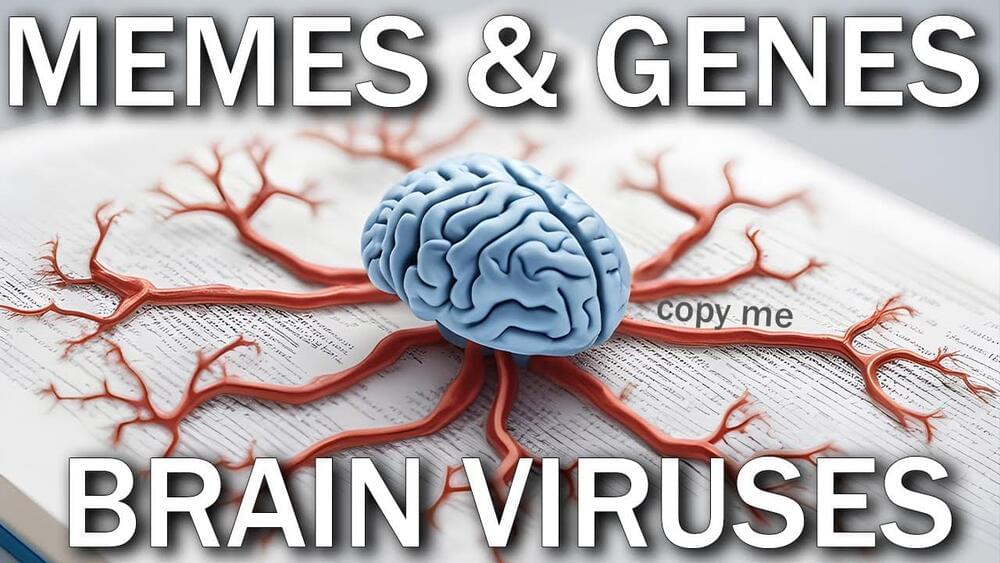Oct 28, 2023
Race to AI: the origins of artificial intelligence, from Turing to ChatGPT
Posted by Shubham Ghosh Roy in category: robotics/AI
Today’s poem-writing AI has ancestry in punch-card machines, trundling robots and godlike gaming engines.
Today’s poem-writing AI has ancestry in punch-card machines, trundling robots and godlike gaming engines.
Link :- https://eng.unimelb.edu.au/ingenium/wearable-device-makes-me…f-a-finger
Researchers from the University of Melbourne and RMIT University have invented an experimental wearable device that generates power from a user’s bending finger and can create and store memories, in a promising step towards health monitoring and other technologies.
Multifunctional devices normally require several materials in layers, which involves the time-consuming challenge of stacking nanomaterials with high precision. This innovation features a single nanomaterial incorporated into a stretchable casing fitted to a person’s finger. The nanomaterial enables the device to produce power simply through the user bending their finger. The super-thin material also allows the device to perform memory tasks.
Continue reading “Wearable device makes memories and powers up with the flex of a finger” »

Go to https://brilliant.org/EmergentGarden to get a 30-day free trial + the first 200 people will get 20% off their annual subscription.
What id really like to see is put the super realistic robot head on Atlas, and equip w/ a super advanced talking LLM, but maybe people arent ready for it yet. Definitely technically possible.
Robotics company Boston Dynamics has integrated OpenAI’s GPT-4 into its Spot robot dog, showcasing its emerging capabilities.
To build the talking and interactive robot dog, Boston Dynamics added a Bluetooth speaker and microphone to Spot’s body, in addition to a camera-equipped arm that serves as its neck and head. Spot’s grasping hand mimics a talking mouth by opening and closing. This gives the robot a form of body language.
Continue reading “Boston Dynamics integrates GPT-4 with Spot and discovers emerging capabilities” »
The approach could help researchers develop therapies for other types of inherited hearing loss.
The only cure for painful sickle cell disease today is a bone marrow transplant. But soon there may be a new cure that attacks the disorder at its genetic source.
On Tuesday, advisers to the Food and Drug Administration will review a gene therapy for the inherited blood disorder, which in the U.S. mostly affects Black people. Issues they will consider include whether more research is needed into possible unintended consequences of the treatment.
If approved by the FDA, it would be the first gene therapy on the U.S. market based on CRISPR, the gene editing tool that won its inventors the Nobel Prize in 2020.
Read now ➡️ by Laurie K. Jackson, et al.
Featured on the cover of Volume 12, Issue 7 (July 2022).
The article 👉
Everdrone’s advanced service promises to reduce the average response time to under 2 minutes.
Aiming to improve emergency response services, Swedish firm Everdrone has introduced a state-of-the-art drone that combines an advanced camera system as well as customizable medical kits.
Christened E2, the multi-purpose drone aims to revolutionize emergency dispatch by providing the ability to transmit live infrared and high-definition video along with emergency medical equipment supplies. Everdrone claims that E2 will help to lower average response times under two minutes.
The US has relied on computer simulations since 1992 for verifying the performance of its nuclear stockpile but will soon get more realistic estimates.
Three US national defense labs are engaged in the process of building a test site, one thousand feet under the ground in Albuquerque, New Mexico, that will send powerful X-rays and verify the reliability of the country’s nuclear stockpile, a press release said.
The US nuclear program heavily relied on actual testing of warheads to determine if its stockpile could serve as a deterrent when called upon. This, however, changed in 1992, after then-President George H.W. Bush signed a law calling for a moratorium on nuclear testing.
It could improve limits on information transfer speed but is made of a super expensive ingredient that might make it financially infeasible.
Researchers at Columbia University in the US have developed the fastest and most efficient superconductor that works at room temperature, a press release said. The superconductor is made of superatomic material only known by its chemical formula, Re6Se8Cl2.
In a short span of time, silicon has become an integral part of most modern-day equipment ranging from cell phones to cars, computers to smart homes. However, scientists have found that silicon will soon reach its limits. This is because of the atomic structure of the semiconductor.
